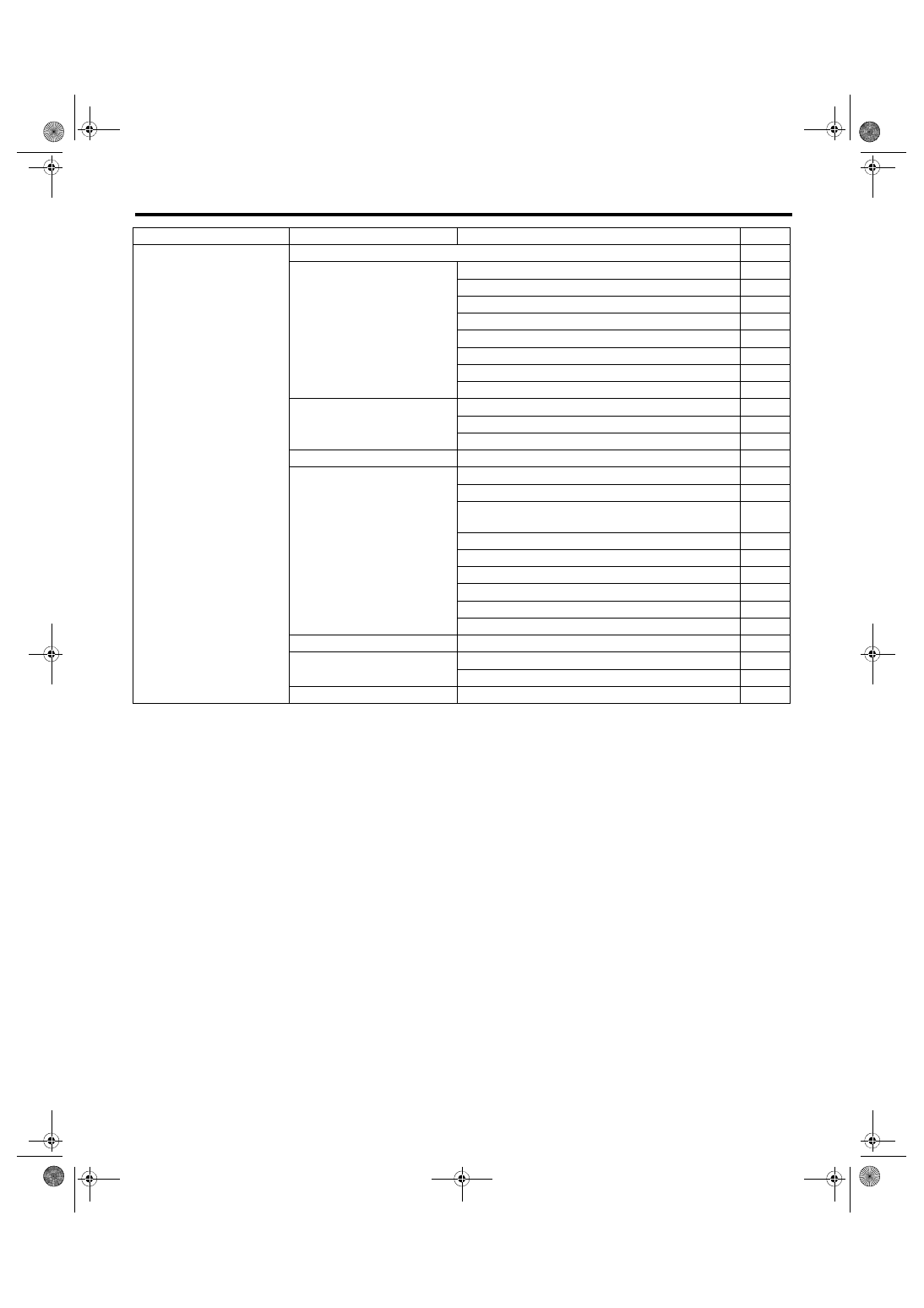Subaru Impreza 3 / Impreza WRX / Impreza WRX STI. Manual - part 87

ME(STI)-110
Engine Trouble in General
MECHANICAL
3. Low output, hesitation and
poor acceleration
Engine control system <Ref. to EN(H4DOTC)(diag)-2, Basic Diagnostic Procedure.>
A
Intake system
Loosened or cracked intake duct
A
Loosened or cracked PCV hose
A
Loosened or cracked vacuum hose
B
Defective intake manifold gasket
B
Defective throttle body gasket
B
Defective PCV valve
B
Loosened oil filler cap
B
Dirty air cleaner element
A
Fuel line
Defective fuel pump and relay
B
Clogged fuel line
B
Lack of fuel or insufficient fuel
C
Timing belt
Defective timing
B
Compression
Incorrect valve clearance
B
Loosened spark plug or defective gasket
B
Loosened cylinder head bolt or defective cylinder head
gasket
B
Improper valve sealing
B
Defective valve stem
C
Worn or broken valve spring
B
Worn or stuck piston rings, cylinder and piston
C
Incorrect valve timing
A
Improper engine oil (low viscosity)
B
Lubrication system
Incorrect oil pressure
B
Cooling system
Over-heating
C
Over-cooling
C
Others
Evaporative emission control system malfunction
A
Symptoms
Problem parts etc.
Possible cause
RANK